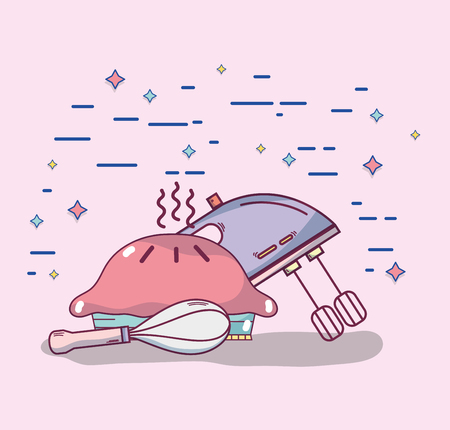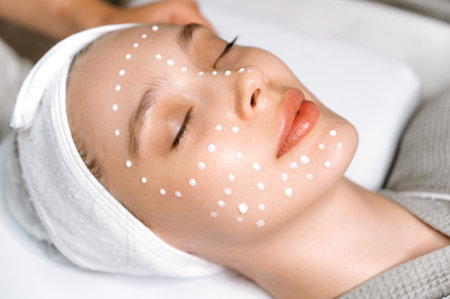1. Consult with a Licensed Professional
Before you jump into getting a chemical peel, its important to talk to an expert. Chemical peels come in different strengths and formulas, so understanding which type is best for your skin is key. A board-certified dermatologist or licensed esthetician will help you figure out the right option based on your skin type, concerns, and goals.
Understand the Different Types of Chemical Peels
Chemical peels are not one-size-fits-all. Heres a simple breakdown of common types:
| Type of Peel | Strength | Common Uses |
|---|---|---|
| Superficial (Light) Peel | Mild | Brightening dull skin, mild acne, uneven texture |
| Medium Peel | Moderate | Treating fine lines, sun damage, pigmentation |
| Deep Peel | Strongest | Smoothing deep wrinkles, scars, severe sun damage |
Discuss Your Medical History and Skin Goals
Your provider will ask about any allergies, medications, or past skin reactions. Be honest about your medical history and what you want to achieve—whether it’s reducing acne scars, evening out skin tone, or minimizing wrinkles. This info helps your specialist choose the safest and most effective treatment for you.
Questions to Ask Your Provider:
- Which type of peel do you recommend for my skin?
- What results can I realistically expect?
- How should I prepare my skin before the procedure?
- Are there any risks based on my health or medication?
Remember:
A thorough consultation sets you up for the best possible results and helps avoid unwanted side effects. Don’t skip this step—your skin will thank you!
2. Discontinue Certain Products Before Your Peel
Getting your skin ready for a chemical peel is all about making sure it’s in the best possible shape to handle the treatment. One of the most important steps is to temporarily stop using certain skincare products that might make your skin extra sensitive or more likely to get irritated during the peel.
Which Products Should You Pause?
Your provider will give you specific instructions, but here are some common products you’ll usually need to avoid for about a week before your appointment:
| Product Type | Examples | Why Pause? |
|---|---|---|
| Retinol & Retinoids | Retin-A, Differin, Tretinoin creams | Can thin and sensitize skin, increasing risk of irritation or uneven peeling |
| Alpha Hydroxy Acids (AHAs) | Glycolic acid, lactic acid serums/creams | Already exfoliate the skin—using with a peel can be too much at once |
| Beta Hydroxy Acids (BHAs) | Salicylic acid cleansers or toners | Makes skin more vulnerable to dryness and redness from the peel |
| Other Exfoliants | Scrubs, enzyme masks, microdermabrasion pads | Physical exfoliation plus a chemical peel may overdo it on your skin barrier |
How Long Before Your Peel Should You Stop?
The general rule is to pause these products 5–7 days before your chemical peel, but always follow your provider’s recommendations since everyone’s skin is different.
What If You Forget?
If you accidentally use an exfoliating product close to your peel date, let your provider know. They may reschedule or adjust your treatment plan to keep your skin safe.
This step isn’t about missing out on good skincare—it’s about setting yourself up for better results and less irritation after your chemical peel.

3. Protect Your Skin from the Sun
One of the most important steps before getting a chemical peel is protecting your skin from sun exposure. Sunburned or tanned skin is more sensitive and can increase the risk of irritation, dark spots, or other complications during your treatment. Here’s how you can keep your skin safe:
Use Sunscreen Every Day
Apply a broad-spectrum sunscreen with at least SPF 30 every morning, even if it’s cloudy or you’ll be inside most of the day. Sunscreen helps prevent sun damage that could affect how your skin reacts to the chemical peel. Reapply every two hours if you’re outdoors, especially after sweating or swimming.
Sunscreen Tips
| When to Apply | How Much to Use | Extra Tips |
|---|---|---|
| Every morning, 15 minutes before going outside | About a nickel-sized amount for your face | Don’t forget your neck, ears, and hairline |
Avoid Tanning Beds and Intentional Tanning
Stay away from tanning beds and skip intentional tanning in the weeks leading up to your chemical peel. Artificial UV rays are just as harmful as natural sunlight and can make your skin more likely to have an adverse reaction during the procedure.
Quick Reminder:
- If you get sunburned or develop a tan, let your provider know before your appointment. You may need to reschedule for safety.
- Wear wide-brimmed hats and sunglasses for extra protection when you’re outside.
- Seek shade whenever possible, especially between 10 a.m. and 4 p.m., when UV rays are strongest.
Taking these steps will help ensure your skin is in its best condition for a safe and successful chemical peel experience.
4. Moisturize and Hydrate
Keeping your skin hydrated is one of the most important steps you can take before getting a chemical peel. Well-moisturized skin is healthier and recovers more quickly, so this prep work will help you get the best results from your treatment.
Why Hydration Matters
Your skin acts like a barrier, and when it’s well-hydrated, it can handle the chemical peel better and heal faster afterward. Dry or dehydrated skin may be more sensitive and prone to irritation during the procedure.
Simple Ways to Hydrate and Moisturize
| Action | How Often | Tips |
|---|---|---|
| Use a gentle moisturizer | Morning & night | Look for fragrance-free options for sensitive skin |
| Drink plenty of water | All day long | Aim for at least 8 cups (64 oz) per day |
| Avoid harsh skincare products | 1 week before peel | No retinoids or exfoliants right before your appointment |
Extra Tips for Better Results
- If your skin feels dry, apply moisturizer more frequently throughout the day.
- Carry a reusable water bottle with you to remind yourself to drink up.
- Avoid alcohol and caffeine as they can dehydrate your skin.
What to Look for in a Moisturizer:
- Ceramides or hyaluronic acid for locking in moisture
- No harsh fragrances or irritants
- Creams or lotions suitable for your skin type (oily, dry, combo)
5. Plan for Post-Treatment Care
After a chemical peel, your skin will need some extra love and attention. It’s important to plan ahead so you’re fully prepared for the recovery process. Here’s what you should keep in mind:
Arrange for Downtime
Chemical peels can cause redness, flaking, and sensitivity for several days after the treatment—especially if you’re getting a medium or deep peel. Make sure to clear your schedule so you don’t have to worry about work meetings, big social events, or other commitments while your skin is healing. If possible, work from home or take a few days off to give your skin time to recover without stress.
Stock Up on Gentle Skincare Products
Your regular skincare products might be too harsh for post-peel skin. Switch to gentle cleansers and moisturizers that are free of fragrance, alcohol, and active ingredients like retinol or acids. Hydration is key during the healing process! Below is a simple guide to help you get ready:
| Product Type | What to Look For | What to Avoid |
|---|---|---|
| Cleanser | Creamy or milky texture, fragrance-free, sulfate-free | Foaming cleansers, exfoliating beads, strong scents |
| Moisturizer | Ceramides, hyaluronic acid, simple formulas | Alcohol-based gels, heavy fragrances, actives (retinol, AHAs/BHAs) |
| Sunscreen | Mineral/physical sunscreen (zinc oxide or titanium dioxide), SPF 30+ | Chemical sunscreens if you have sensitive skin |
Create a Recovery Kit
Put together everything you’ll need in one easy-to-reach spot at home. This can include:
- A gentle cleanser and moisturizer as listed above
- A soft washcloth (not rough or exfoliating)
- Mild sunscreen suitable for sensitive skin
- A wide-brimmed hat or cap if you need to go outside
- Cool packs if your provider recommends them for comfort
- Avoid makeup until your provider says it’s okay!
Extra TLC Tips
- Don’t pick at peeling skin—it needs time to heal naturally.
- Stay hydrated by drinking plenty of water.
- Avoid hot showers, saunas, and sweaty workouts until fully healed.
- If anything feels unusual or uncomfortable, reach out to your skincare provider.


